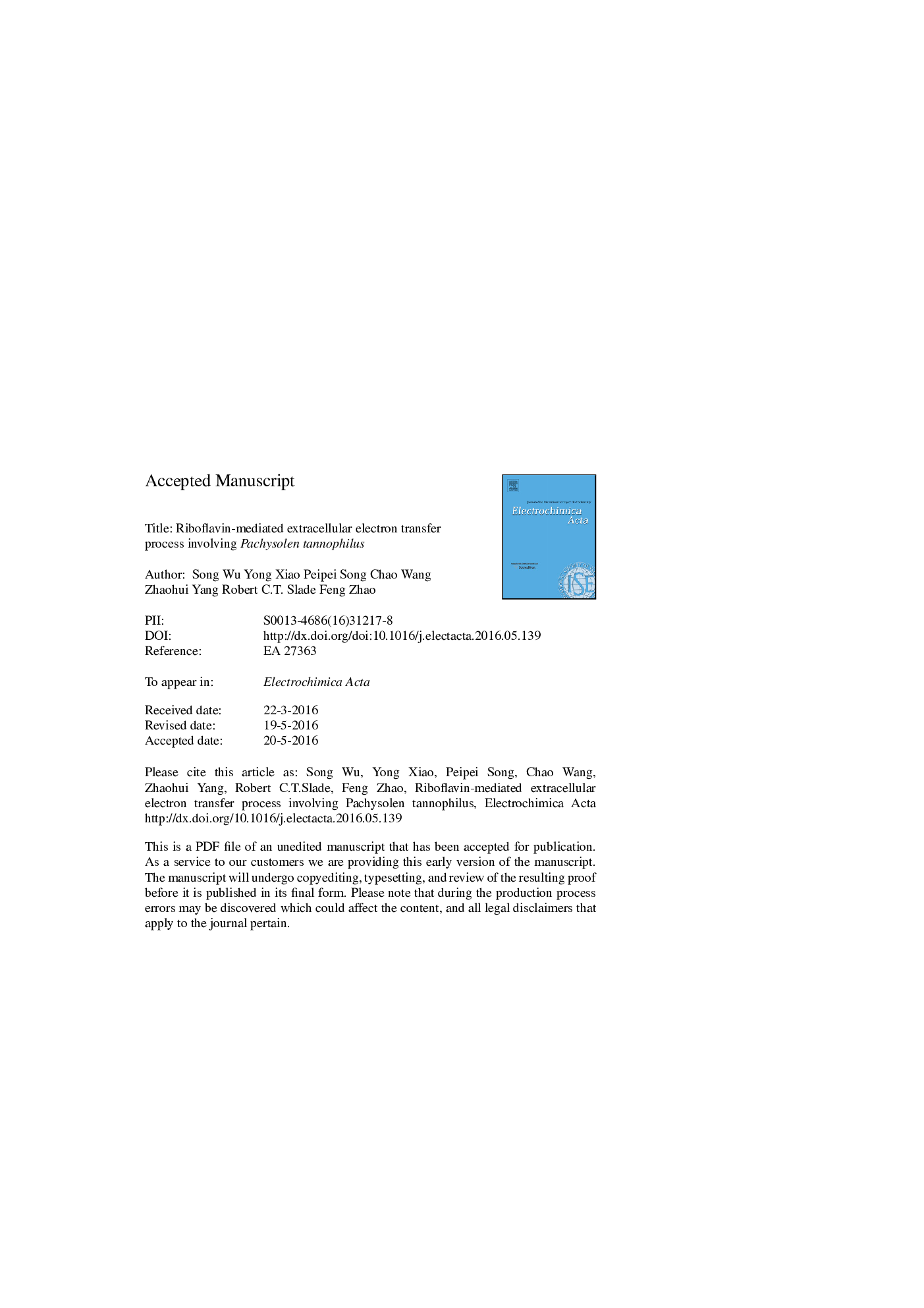| Article ID | Journal | Published Year | Pages | File Type |
|---|---|---|---|---|
| 6606632 | Electrochimica Acta | 2016 | 24 Pages |
Abstract
Microbes can generate electricity in microbial fuel cells and transform contaminants in nature, utilizing extracellular electron transfer (EET). Fungi exist widely in environment but few studies have concerned an associated EET mechanism and so their application is limited. In this study electrochemical techniques were employed to study the extracellular reduction capability of fungi using a representative model viz. Pachysolen tannophilus; a solid electrode and soluble Cr(VI) were used as extracellular electron acceptors. Despite a thick cell wall, the yeast was proved to be electrochemically active and an obvious redox peak was observed at â0.41 V in differential pulse voltammetry. Analysis of electrochemical and HPLC data led to the proposal of an EET with riboflavin as the electron transfer mediator. Riboflavin secreted by the yeast was also responsible for the transformation of Cr(VI) to less mobile and less toxic Cr(III). Further results demonstrated that the acidophilic P. tannophilus secreted riboflavin to a concentration of 0.26 μmol/g biomass at pH 3, but only to 0.15-0.16 μmol/g biomass at pHs between 4 and 7. The findings contribute to the understanding of biogeochemical processes and further contribute to innovative remediation of polluted environments.
Keywords
Related Topics
Physical Sciences and Engineering
Chemical Engineering
Chemical Engineering (General)
Authors
Song Wu, Yong Xiao, Peipei Song, Chao Wang, Zhaohui Yang, Robert C.T. Slade, Feng Zhao,
